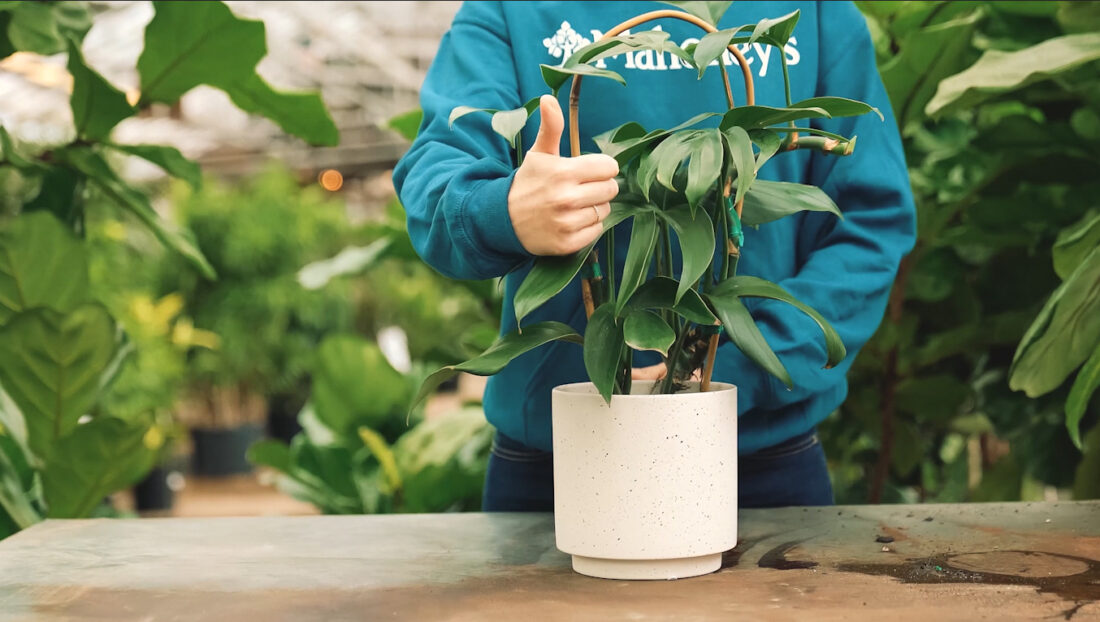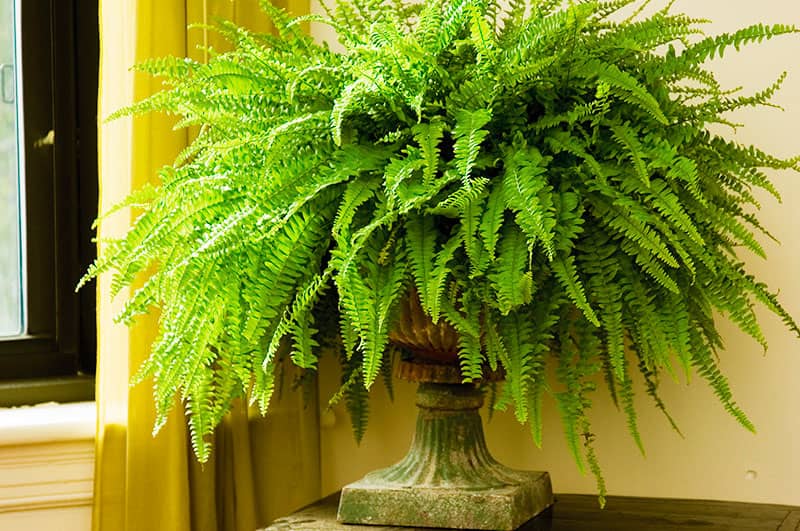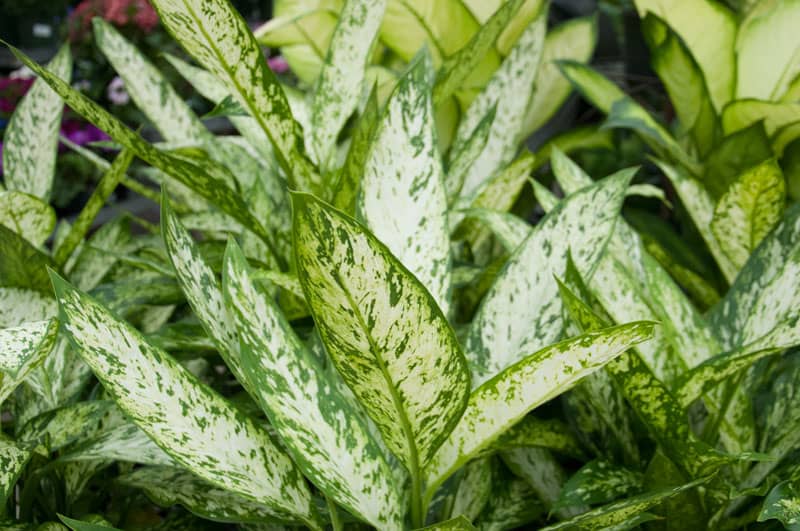Growing Citrus in New England – don’t be afraid to try!
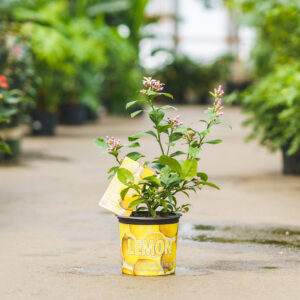 When we think of citrus in the US most of us call to mind the warm and sunny climates in Florida and California where oranges, lemons, limes, grapefruits, and kumquats can flourish outdoors. But even in New England, where our winters are not exactly conducive to growing tropical plants, we can get creative and enjoy fragrant citrus blossoms, gorgeous glossy foliage, and homegrown vitamin C!
When we think of citrus in the US most of us call to mind the warm and sunny climates in Florida and California where oranges, lemons, limes, grapefruits, and kumquats can flourish outdoors. But even in New England, where our winters are not exactly conducive to growing tropical plants, we can get creative and enjoy fragrant citrus blossoms, gorgeous glossy foliage, and homegrown vitamin C!
So, if you’re a Bay Stater looking to enjoy your very own oranges or fresher than fresh lemonade, we’re here to help! Here are a few things to keep in mind when growing citrus in Massachusetts:
Location, location, location.
Citrus plants are hardy in zones 8, 9, and 10 and won’t survive winters outdoors here in zone 6 so it’s important that you ensure your citrus plants have a winter residence inside your house as well as a summer home outdoors. Offer at least a few hours of direct sunlight each day all year round. What does “direct sunlight” mean indoors? Placing your citrus plant within 3-4 feet of a South-facing window with unobstructed light (be sure to check for interfering shade trees or overhangs outside) is ideal. South-facing windows offer the greatest amount of light throughout the day. A close second when it comes to bright indoor light is western exposure where you get a few hours of strong afternoon sun each day.
How can you tell which direction your windows face?
- pay attention to where the sun rises and sets in relation to your home (the sun rises in the east and sets in the west)
- locate your home on GPS to find the cardinal direction your home faces.
- Use a compass, simple but highly effective.
No south-facing windows? You may still be able to give citrus a go! Try out a grow light or start with a very small citrus plant and you may be able to help it adapt to lower light conditions!
Tips for relocating your citrus when the time comes:
- Choose a smaller variety that’s easier to move. Good choices include tangerines, ponderosa or Meyer lemons, and Satsuma or Calamondin oranges.
- If you want to use a larger variety, consider adding a plant dolly on casters to make it easy to roll in and out of the house.
- Remember that when you bring your citrus outside for the summer it will need to gradually acclimate to full sun. Start by placing the tree in a semi-shady location and move it little by little into full sun over two weeks.
Temperature.
Citrus plants say brrrrrr when temperatures dip below 50 degrees at night. Watch the weather for a clue as to the best time of year to bring your plants indoors. Indoors, citrus plants are happiest when they are kept in temps between 65 and 70 during the day and 55 to 60 at night.
Water
Citrus plants will be happiest if soil is evenly moist but not too wet. A moisture meter is something to consider when growing citrus. During the summer when your container is outdoors in full sun, give a thorough watering twice each week. Use a watering wand or watering can to separate the stream and mimic rain and water the entire surface area of the soil until you see a little water dribble out of the drainage holes. In winter, you’ll water less but you may want to consider using a humidifier to mitigate the dry indoor air. Check out our winter watering guide for more tips!
Avoid putting your citrus plants in the same room as a wood-burning stove. This may create conditions that are far too dry for healthy citrus to thrive.
Pollinating
Citrus flowers need to be pollinated to set fruit, and the most important pollinators for citrus trees are bees! So, if you want fruit you’ll need to ensure that your citrus plants spend the warm months in their summer home for plenty of playtime with their winged buzzing friends.
If your citrus plant sets flowers during the winter months, you’ll need to manually pollinate with a paintbrush or Q-Tip. This is easy enough to do. Gently brush the pollen-covered anthers with a paintbrush and then touch your brush to the stigma in the center of the flower. Check out this video to see how easy it is!
Fertilizing.
Citrus plants are heavy micro-nutrient feeders and require a special diet to stay healthy. We recommend fertilizing with True Organic Citrus and Avocado Food or Espoma Citrus Tone every 3-4 weeks during the growing season (March – August). Avoid feeding your plant during the winter months, this is the time to avoid encouraging new growth. Let them rest.
Pest management.
Like all fragrant plants, citrus has a habit of attracting unwanted pests. To mitigate this, give your plants a good shower with a hose before bringing them inside for the winter. Let them dry then spray all the foliage and stems with Captain Jack’s Citrus, Fruit, and Nut Orchard Concentrate or neem oil.
Growing tropical plants outside the tropics isn’t easy but it’s oh so satisfying. Remember to be patient with yourself and with your plants…when it comes to plant cultivation, there is no such thing as a green thumb or a black thumb. It’s the patient, inquisitive thumb that will find the greatest rewards.
For more information, download our printable Citrus Care Guide!
Houseplants: they’re not as thirsty as you think.
TIPS FOR WINTER HOUSEPLANT WATERING
Winter is a wonderful time of year to cultivate your very own indoor jungle and bask in the glory of nature while staying warm and dry at home. Whether you’re new to indoor plant parenthood or a seasoned veteran with teenaged plants at home it won’t surprise you that the number one question we hear in the greenhouse is “how much should I water?”
And while we’d love to give you a tried and true, one-size-fits-all watering recipe, the truthful answer is “it depends.” Light, humidity, plant species, and time of year all play a role but here are a few rules of thumb for keeping your indoor plants happy all year long.
-
-
- It’s easier for a plant to recover from too little water than too much water. Overwatering can lead to root rot and fungal issues on the foliage. Many indoor plants will thrive on a fair amount of neglect.
- Plants prefer infrequent deep watering over frequent shallow waterings. Resist the temptation to dump the remnants of your forgotten water glass into your plants, they won’t thank you for that.
- Light and water work together. The more light your plant receives, the more water it will need. Plants in low light areas will need less water than their sun-basking friends.
- Cut watering frequency in half during the winter months. Plants use less water in winter than they do during the growing season. Generally speaking, you’ll water half as often in winter as you would during spring and summer.
- Plants love to be watered from the bottom, when possible. Check out our video on “cache-potting” for the best way to do this:
-
So, how can you tell if your houseplants need water? Here are our favorite ways to find out if our leafy green friends want us to make ‘em a round of drinks:
-
-
- The knuckle test: stick your finger right into the pot all the way up to your knuckle. If it’s still moist, you can skip the watering.
- The weight test: for smaller plants lift the pot. If it feels light, it’s probably time for a drink. If it’s heavy, there’s plenty of water to sustain her for now.
- The thump test: if your plants are in plastic nursery pots give the side of the pot a flick. If you hear a hollow thwack, time to water, if it’s more of a thump or thud, she’s not thirsty.
-
Keep in mind that different plants have different watering needs, when in doubt chat with one of our greenhouse team members to learn more about your new plants’ preferences. As Uncle Mike likes to say: “plants are like people”…everyone’s a little different.
A BEGINNERS GUIDE: CARING FOR HOUSEPLANTS
Caring for indoor plants is really pretty easy. Plants need light, water and fertilizer to grow and flourish. Different plants have different requirements and some plants are easier than others. If you are a beginner – or if you are really busy and need something low maintenance – start with one of our easy care houseplants. These plants are durable, will handle a range of indoor temperatures in your home and will withstand a bit of watering neglect.
HOW MUCH LIGHT DOES MY INDOOR PLANT NEED?
This is a key question and one you need to ask before deciding which houseplant to bring home. Light requirements are divided into 3 groups:
- Full Sun
4 to 6 hours a day direct sun – try a southern exposure. - Medium Light
2 to 3 hours of direct sun, or 6 to 8 hours of bright indirect light, typically eastern or western exposure, or perhaps southern exposure but not placed directly near a window. - Low Light
No direct sunlight, but some indirect light, or even 8 or more hours a day of electric lights (regular incandescent, fluorescent, etc.)
Some plants are more sensitive to light fluctuations than others. For best results pick a houseplant that matches your room’s available light. Look at the plant label to see its group, or just ask us.
HOW TO WATER YOUR INDOOR PLANTS:
After determining the right amount of light, you need to know a little bit about watering. Surprisingly enough, the #1 reason houseplants fail to thrive is OVERWATERING, and that is because many people look at the top surface of the soil to decide when to water. Soil often looks dry on top, even when the plant has plenty of moisture. The real question is how moist the soil is below the surface.
Stick your finger right into the soil to a depth of 2” (about to your second knuckle). Gently pull it out look near the knuckle. You should be able to see if the soil is dry, slightly moist or very wet. Sort of like a human cake tester.
- If the soil is dry at this 2” depth, it is time to water.
- If the soil is slightly moist, wait a day or more.
- If the soil is downright wet at this depth, cut back on how frequently you water.
If possible, water your plants in the morning and use tepid (slightly warm) water.
Water thoroughly and slowly, but stop as soon as water runs through the drainage holes. Make sure that the soil is thoroughly wet when you are finished. If the water runs through the drainage hole too quickly, the pot may be crammed with roots and contain too little soil. In this case it may be time to repot.
It’s important not to leave excess water in the saucer – roots can rot if constantly wet. An alternative is to fill your drainage dish with a layer of small pebbles or river rocks. The rocks will keep the bottom of the pot elevated over excess water.
DO I NEED TO FERTILIZE MY HOUSEPLANTS?
We regularly feed our houseplants. When you bring it home it is important to continue this care – especially if it is a flowering plant. As a rule of thumb, houseplants should be fed every other week in spring, summer and early fall. As light levels diminish in November, your plant will need less fertilization – once a month or less. Using a complete liquid fertilizer will ensure healthy, thriving plants. Follow package instruction carefully – too much fertilizer can be worse than too little.
Follow these three guidelines and even the most notorious plant killer can enjoy happy healthy plants in many rooms in their home, dorm or office.
AIR CLEANING HOUSEPLANTS
Airborne toxins such as formaldehyde, TCE and benzene are present in every home and office. That’s because these compounds are found in countless products used everyday: paints, varnishes, plastics, rubber, insulation and particleboard. Even permanent-pressed clothes, grocery bags and facial tissue contribute harmful toxins in the air you breath. Worse yet, symptoms from these toxins include eye, nose and throat irritation, headaches, allergic dermatitis, chronic respiratory diseases and neuropsychological problems. Yikes!
Houseplants fight air pollution by absorbing these harmful contaminants. NASA researchers discovered that certain houseplants can reduce indoor pollutants by 87 percent in 24 hours. So, why not add several plants to your home and office? You’ll love the look and breathe easier, too!
1. FICUS ELASTICA – RUBBER PLANT
This beatiful plant will grow to be a dramatic feature in any home or office
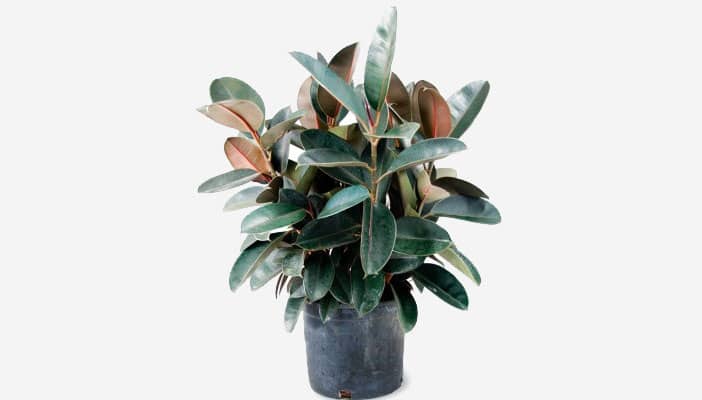
A bold tree, with its large, rubbery leaves, on stems as straight as exclamation points! This variety is a winner indoors – give it as much indirect light as possible and keep away from drafts – you’ll have plently of joyful years ahead with your new houseplant. Although they enjoy humidity, they also tolerate lower humidity levels.
2. ARACEAE EPIPREMNUM – POTHOS
An easy indoor vine that anyone can grow.
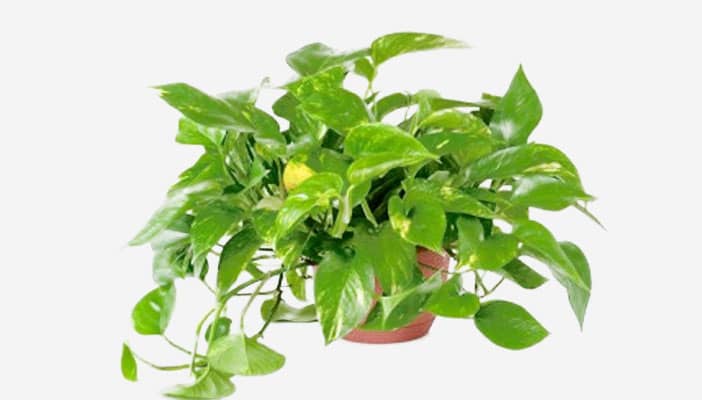
While In the wild they can overwhelm a hundred foot tall tree; in your house they will simply trail nicely down a plant stand. One of the top ten clean air plants, Pothos help remove formaldehyde, benzene, and carbon monoxide from the air. When a vine gets too long, simply prune it from the top (close to the soil) to encourge new growth near the center of the plant.
3. ARACEAE SPATHIPHYLLUM – PEACE LILY
Thrives in lower light – so it’s lovely in dining and living rooms, offices, etc. Purifies the air, too.
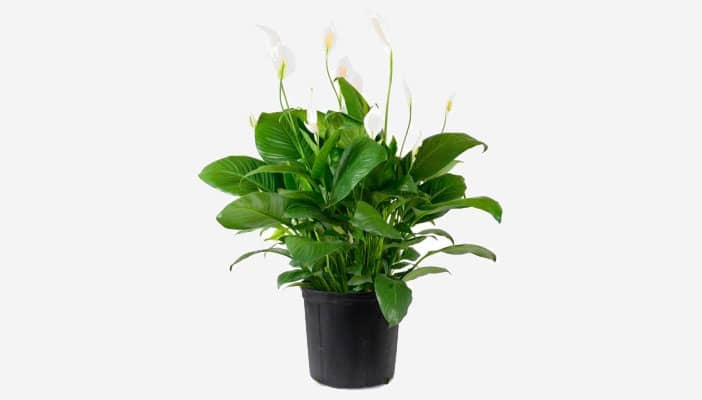
Another one of our very popular “Easy Care” houseplants, these beautiful Peace Lilies have striking white flowers and beautiful foliage.They remove air borne toxins, too! They like water and misting more in the summer, less in the winter. They can bloom twice a year if fertilized. Try the slow release Osmocote.
4. FICUS BENJAMINA – FICUS TREE
A beautiful tree that you can grow in your house.
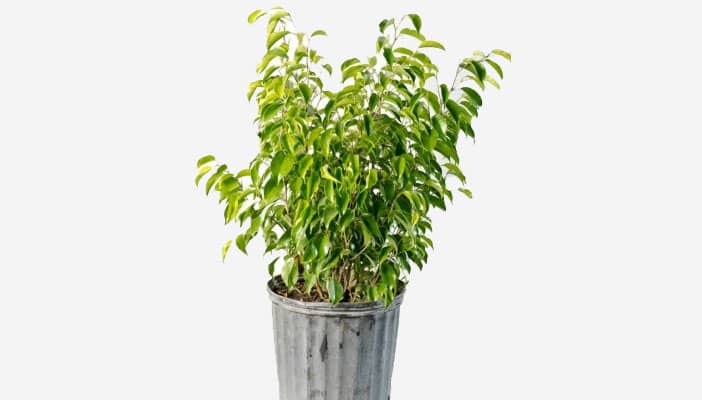
This Ficus tree is a classic in office lobbies and atriums It tolerates some full sun but is best in filtered sun. Do not overwater; allow the soil to dry and inch or two below the surface. What it like best is to be keep in one spot; moving it from one environment to another can cause it to drop leaves. Allow it to acclimate if you are dramatically changing its home.
5. DRACAENA FRAGRANS “MASSANGEANA” – CORN PLANT
A houseplant that thrives in either bright or low light!
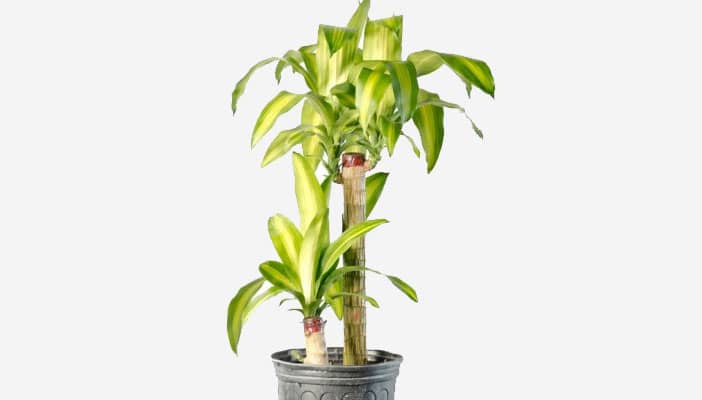
One of our most popular “Easy Care” houseplants, this low maintenance miracle resembles the leaves of corn stalks. Although it tolerates neglect, be sure to not over-water or over-fertilize, and never place your corn plant in a draft or direct sun. This slow-growing houseplant will give you visual pleasure for years to come!
6. AGLAONEMA – CHINESE EVERGREEN
One of the easiest houseplants to grow – now available in exciting new hybrids.
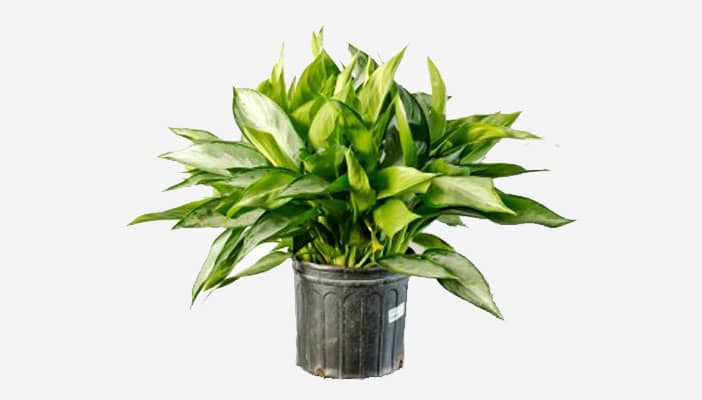
Aglaonema are popular at home, dorms and offices because they are both great looking and very dependable. Check out the hybrids for fresh new color options. In general the green varieties tolerate low light whereas the colorful varieties need brighter light (check tag). Considered a lucky plant in Asian culture, Aglaonema like to be kept moist but not soaking wet.
7. CHAMAEDOREA ERUMPENS – BAMBOO PALM
Looking for a palm that tolerates shade? Stop right here!
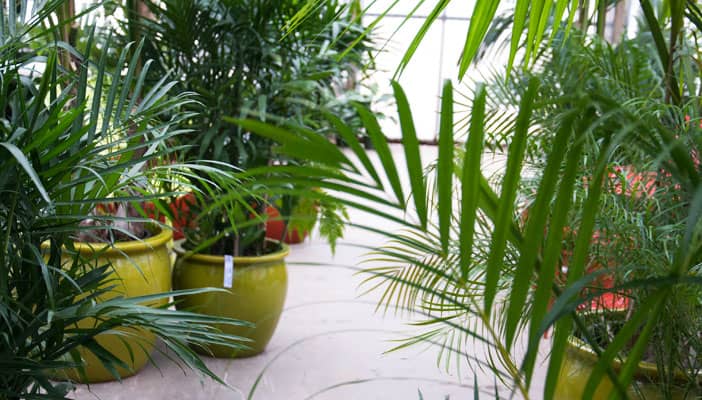
Beautiful, tall and graceful, this palm adapts well to a variety of different light environments. Plus it’s proven to help clean the air toxins in your home or office. Although this palm is relatively low-maintenance, it likes to be misted once in a while. An inexpensive, beautiful addition to your decor!
8. SYNGONIUM PODOPHYLLUM – ARROWHEAD VINE
Great easy care houseplant for a hanging basket or as a climber!
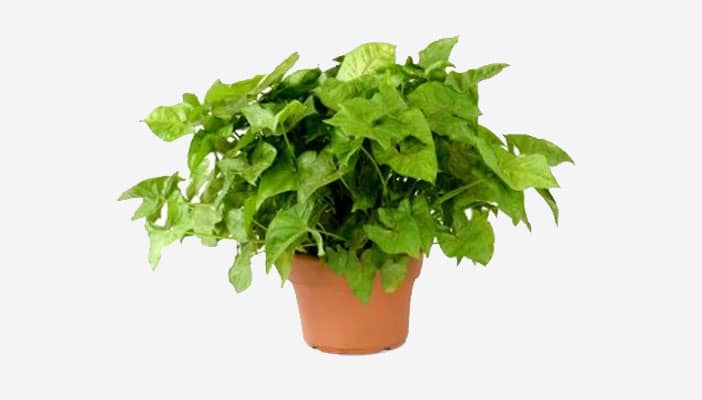
The arrow-shaped leaves on this easy houseplant make it a great option for places where a climber or hanger work better. Arrowhead vines will tolerate low light but will grow much better in bright, indirect light. They like to be moist at all times, but not soggy. Arrowhead vines like to be root-bound and therefore do not need to be repotted very often.
9. SCHEFFLERA ARBORICOLA – ARBORICOLA
The perfect match for anyone wanting a houseplant!
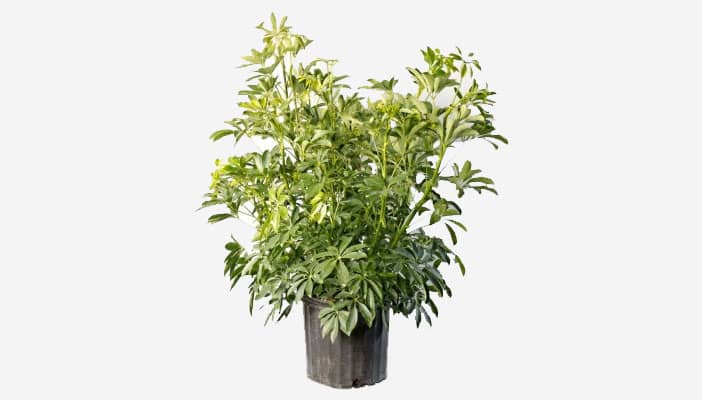
You can’t beat an Arboricola! It can tolerate a wide variety of soil types and light conditions. Depending on where you place your plant and how much light it gets, you might have different size & colored leaves, but your Arboricola will love you just the same! During the winter watch the moisture levels and mist as needed. One tip is to place the pot on a tray of river rocks.



